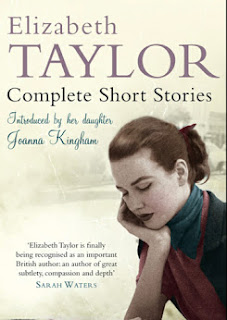“Face” - A Short Story by Elaine Chiew - from her debut collection, The Heartsick Diaspora- 2020
“Face” is the fifth story from Elaine Chiew’s Collection The Heartsick Diaspora upon which I have posted. Four of the stories are about people from Singapore living outside the country, in London or New York City.
Singapore is a city built on diasporas of Chinese, Malays, and Indians. When my wife and I visited Singapore, coming from Manila, it almost seemed like a city from the future. Both cities were devastated by World War Two. We had to wonder why Singapore is now a model of what a big city should be
(I read somewhere it is the only city of over a million with a positive greenhouse impact) while, love it as I do, Manila is a hot chaotic mess. Somewhere in the diasporas that built Singapore may be found a clue. The stories in The Heartsick Diaspora are a
about two different sides to Singapore’s Diaspora. One side is older people wishing they were back in Malaysia and their children now living in London and New York City. The stories are very much about generational conflict, mostly so far of mothers versus their adult daughters and daughter in laws, the fathers have passed on.
Some of the daughters have or once had caucasian husbands, not much is made of this but for sure the mothers at the very best might grudgingly accept this.
In “Face” an older Mayalsian
widow, with Malay Chinese roots, is living with her son and daughter-in- law in London. His wife, of Chinese ancestry, was born in San Francisco (another City built on multifarious forms of diaspora). Their daughter barely speaks Chinese. Besides the opening story “Coffin Maker” set in Singapore during World War Two, for the first time we see exhibited vicious bigotry.
As the story opens, the daughter-in-law rejects the gifts the older woman has brought from Singapore for her granddaughter Lulu:
“When she first arrived, Yun had brought White Rabbit Candy and haw flakes for Lulu. One look and Karen snatched away the candy and said it’d give Lulu cavities, her granddaughter’s bereft
expression notwithstanding. Haw flakes? Look at the nutrition label. Full of processed sugar. Yun doubts she has anything else Lulu will want to have.”
The older woman feels useless and hates the idea of being a burden. She knows her son and daughter-in-law have argued about her. To be dominated by a daughter-in-law is deeply contrary to her culture. She has medical issues and wants to go back to Malaysia. Something terrible happens to her on a train, hurting her very deeply.
The story deals with concept of Face in a very revlatory fashion.
I have talked about Brexit with a number of my UK based friends. Most think the rising level of racial bigorty in the UK is a legacy of colonialism. I think that is part of depth at the dark core of this story.
I look forward to posting upon the other nine stories in The Heartsick Diaspora.
I give the collection my highest endorsement.
Elaine Chiew
Elaine is a writer and a visual arts researcher, and editor of Cooked Up: Food Fiction From Around the World (New Internationalist, 2015).
Twice winner of the Bridport Short Story Competition, she has published numerous stories in anthologies in the UK, US and Singapore.
Originally from Malaysia, Chiew graduated from Stanford Law School and worked as a corporate securities lawyer in New York and Hong Kong before studying for an MA in Asian Art History at Lasalle College of the Arts Singapore, a degree conferred by Goldsmiths, University of London.
Elaine lives in Singapore and her book, The Heartsick Diaspora, and other stories, will be published by Myriad in 2020..from epchiew.com
Mel u




































